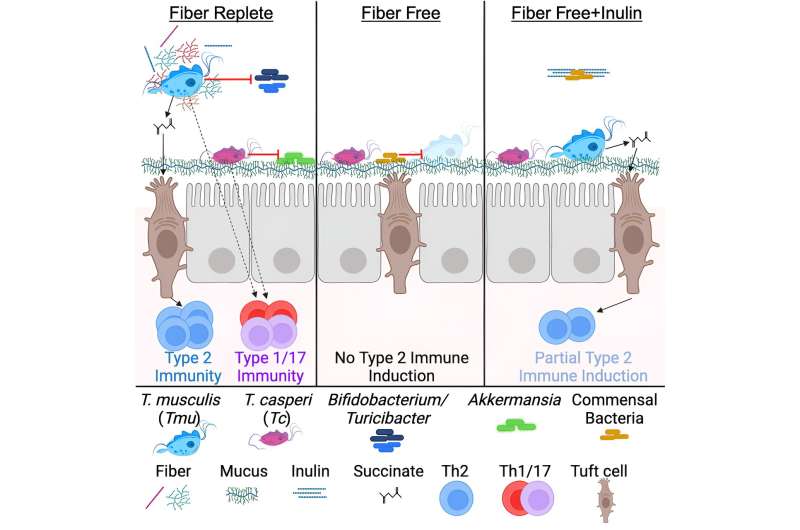December 29, 2023 report
This article has been reviewed according to Science X's editorial process and policies. Editors have highlighted the following attributes while ensuring the content's credibility:
fact-checked
peer-reviewed publication
trusted source
proofread
Researchers find large diversity of protists in the Parabasalia phylum in both mice and humans

A team of pathologists, geneticists, immunologists and engineers at the Stanford University School of Medicine, has found a previously unrecognized diversity of protists in the Parabasalia phylum in both mice and humans. In their paper published on the open-access site of the journal Cell, the group describes their study of the differences between species of protists living in the guts of mice and humans.
Protists, are a type of single-celled microorganism. Prior research has shown that they coexist in the gut of many creatures—including humans and mice—with bacteria, fungi and other microbes. But as the researchers with this new effort point out, compared to other microbes in the gut, protists have been little studied. One thing that has been learned about them is that they can instigate an immune response in the part of the gut in which they reside—such as the small intestine.
To learn more about protist diversity in the mouse gut, the research team collected fecal samples of lab mice and screened them for different types of protists. They identified a previously unknown species similar to Tritrichomonas musculis, a protozoa found in the mouse gut that is known to instigate a type II immunity reaction—they named it Tritrichomonas casperi. In looking at its DNA, they found that it was a close relative of two types of species that reside in the human gut.
By conducting experiments with the newly discovered species, they found that it had the means to set off production of TH1 and TH17 cells, but it did not excrete succinate, making it the only known gut protists identified by the researchers not capable of instigating a type II immune reaction in the mouse small intestine. They also found that T. casperi tended to consume intestinal mucus, rather than the food ingested by its mouse host, and that mice that had T. casperi in their guts had lower numbers of mucus-consuming bacteria in the same gut area, suggesting that it was capable of outcompeting them.
The researchers claim their work shows that protists play much more than a secondary role in gut biome activity, and they suggest that more research needs to be done to learn more about their impact on overall gut activity.
More information: Elias R. Gerrick et al, Metabolic diversity in commensal protists regulates intestinal immunity and trans-kingdom competition, Cell (2023). DOI: 10.1016/j.cell.2023.11.018
Journal information: Cell
© 2023 Science X Network


















